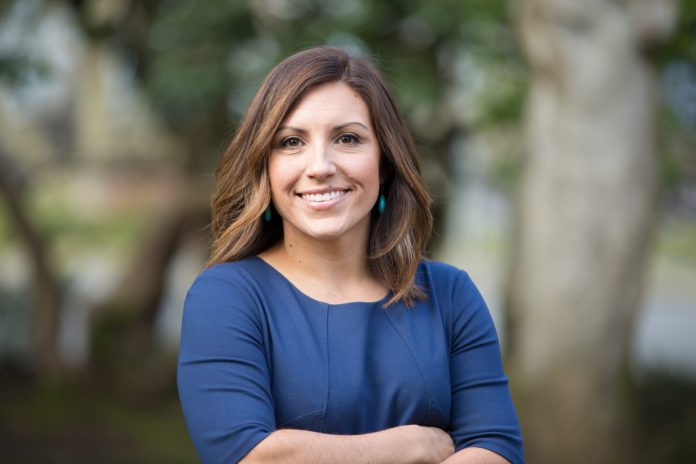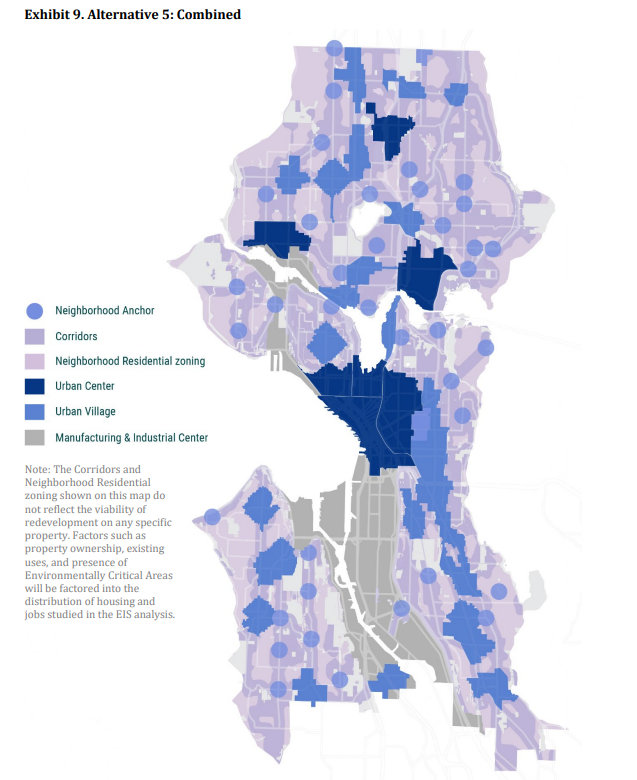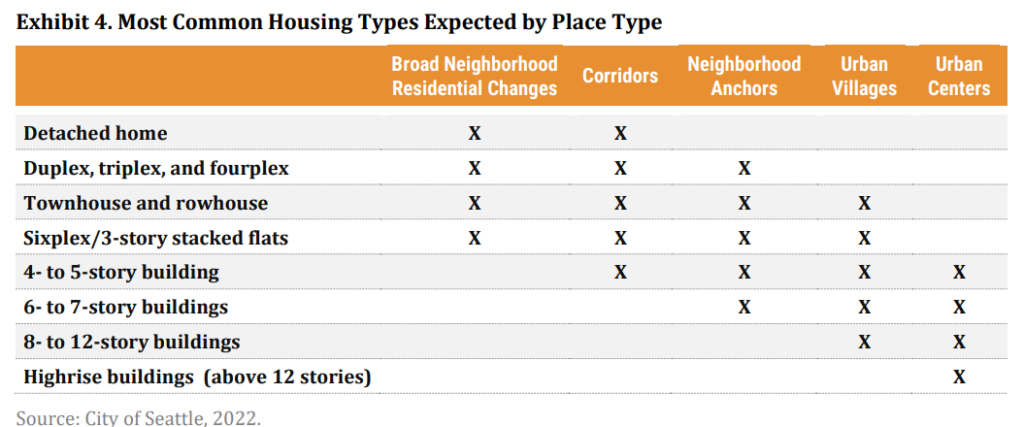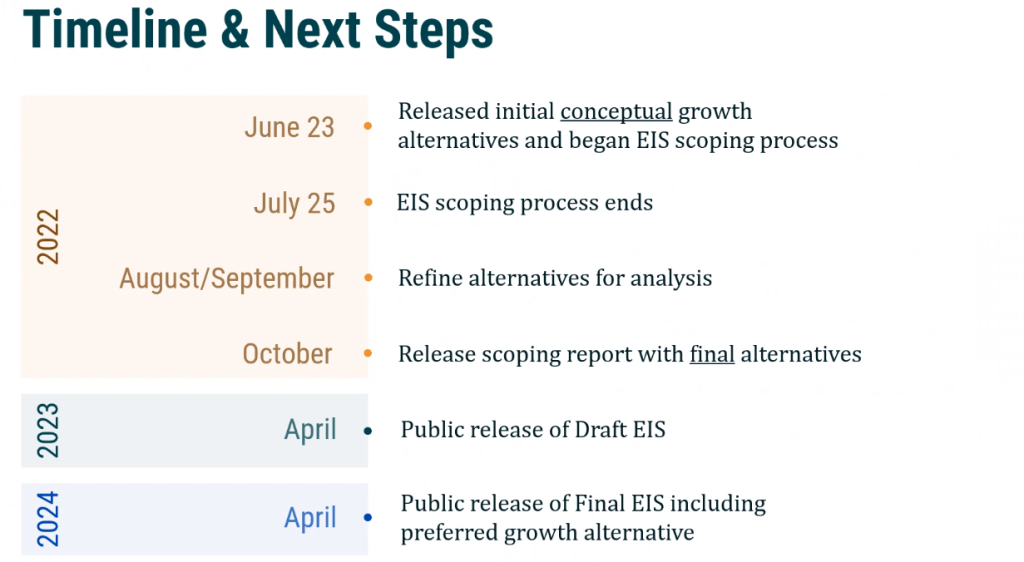
The land use committee meeting on Wednesday was an eventful one, as several councilmembers shared their critiques of the Seattle comprehensive plan work thus far. Councilmember Alex Pedersen had already attacked the plan from a conservative ‘slow the growth’ perspective, but most of his colleagues urged OPCD to think bigger and add more housing options.
Some also critiqued the legislation extending the design review exemption for affordable housing, which is up for a vote later this month ahead of the year-end lapse of the emergency ordinance. Nonetheless, the bill ultimately still seemed to have the votes, with councilmembers generally couching their concerns by noting they still support the effort, even if some fine-tuning or clarification was requested.
Later in the meeting, staff from the Office of Planning and Community Development (OPCD) presented its scoping report for the comprehensive plan update due in 2024 and noted that public comment overwhelmingly favored more housing in Seattle, including adding a bolder Alternative 6 to the study, as The Urbanist supported. While OPCD said these ‘go bigger’ comments were reflected in its tweaks to the study alternatives, particularly the Combined Alternative 5, Councilmember Teresa Mosqueda questioned whether the study was still too limited. She urged OPCD to add Alternative 6 to the study as requested in public comment.
“I am concerned that this proposal is not adequately reflecting that bold vision or setting ourselves up for that needed action if we don’t consider that additional option,” Mosqueda said. “This is a once-in-ten-year opportunity, and I don’t want us to again reinforce policies that were inadequate and inequitable in the past when we consider how to update our comp plan now.”
Specifically, she pressed OPCD’s Brennon Staley why the height limit remained at 30 feet in Neighborhood Residential zones under the “Alternative 3: Broad” that was supposedly focused on increasing housing growth in those areas. After meandering around in his answer noting the possibility of a height bonus for affordable housing projects, Staley said they wanted to respect and fit into “architectural character” of those neighborhoods. Mosqueda took issue with that framing.
“I’m concerned when that type of language is used,” Mosqueda said. “Because the reason that we hear ‘the character of the neighborhood’ is because people don’t want to see the type of density that we actually need. So, we’ve got to remember why we’re having these conversations anyways, and the limited opportunities we have once a decade to actually have these discussions.”

Furthermore, Mosqueda highlighted that naively preserving neighborhood character across a huge swath of the city can also preserve the racial inequities that went into their creation.
“We cannot forget about how those current [neighborhood] characters were created, and the overlay of the racist planning covenants that if you overlay with our existing planning still reflect redlining,” Mosqueda said. “We have an opportunity now to ensure that we can build the housing needed across our city for a population that doesn’t have enough housing, but if we’re actually having a 20-year visionary plan, we need to plan for the folks who are coming. So, I’m really concerned we’re talking about limiting the future design if we’re looking at character within existing neighborhoods that were designed to exclude people from living there and to exclude density and diversity in terms of housing types and people.”

In 2018, Mosqueda added $500,000 to the budget instructing OPCD to conduct a racial equity study of its existing “Urban Village” strategy, which funnels growth away from single family zones that consume about 75% of the city’s residential land and toward the 10% of land designated at Urban Villages or Urban Centers. Then-Mayor Jenny Durkan delayed publication of that study repeatedly, but finally in July 2021 it was published. The results underscored the need for a new framework that grappled with the preponderance of single family zoning and limited multifamily zones in the city, which the study found was perpetuating harm on low-income communities and communities of color.
“The City must end the prevalence of single-family zoning” with a “racially inclusive approach,” OPCD said in its Comp Plan presentation, quoting a recommendations from PolicyLink, the consultant on the racial equity study. OPCD pledged work in the Comp Plan’s Environmental Impact Statement (EIS) to “study alternatives in the EIS that meet 20-year housing needs and provide for increased supply and diversity of housing types, specifically to meet the identified needs of BIPOC [Black, Indigenous, people of color] households.”
Councilmember Tammy Morales largely agreed with Mosqueda, noting the squeezing housing growth into narrow corridors along busy arterial roads was creating harm, particularly on disadvantaged communities of color. She said they would perpetuate past inequities by not rethinking the Urban Village planning framework. She noted the need for community-led, community-owned development, land trusts, repurposing public land, and developing social housing, which she championed in the budget process, but ultimately failed to get a social housing division added to the Office of Housing.
A proposal to add a public developer of social housing will be on the ballot in February due to grassroots initiative by the House Our Neighbors coalition. The Urbanist Elections Committee has endorsed that I-135 social housing measure.
In contrast, Pedersen argued the city already had enough housing capacity and the proposal should focus on adding only low-income housing and extracting bigger affordability requirements out of new developments. OPCD pushed back on the notion of “enough” capacity, noting that it is a minimum threshold. Staff stressed the importance of having the right kind of housing in the right areas and steering clear of any constraint in housing that could drive up housing costs. OPCD long-range planning manger Michael Hubner noted importance of other indicators and brought up that the city’s housing growth had fallen far behind its job growth.
“The city has grown twice as fast as we anticipated in the existing [Seattle 2035] comprehensive plan,” Hubner said. “We’re operating under the assumption that if we provide more space, more opportunities for housing development, we won’t be at as much risk of falling into that situation going forward — that we can keep up with the demand for housing driving up prices.”
Land use chair Dan Strauss highlighted that statistic and asked Hubner to restate and confirm it. He obliged and said the agency has come to understand they were using a “low-ball number” in the 2035 plan the City adopted in 2016 due to growth happening much faster than anticipated.
Councilmember Sara Nelson, seemed more supportive of housing growth than Pedersen, who she often aligns with on votes — including in dissenting on the biennium budget council passed on Tuesday. However, Nelson did bring up the need for an anti-displacement strategy, including of the small landlord variety.
“I am concerned about what’s happening to the stock of small mom-and-pop landlords,” Nelson said, asking OPCD to incorporate findings of the City’s small landlord workgroup.
Watch the meeting below for more details:
OPCD’s schedule calls for the release of the Draft Environmental Impact Statement (EIS) in April 2023. That mega-document will flesh out the alternatives further. After another year of public outreach, comment, and refinement, the City has tabbed April 2024 as the release date for the final EIS, which will settle on a “preferred alternative” that will likely mix and match from the studied alternatives. Council can then make tweaks, but it must approve the comp plan by the end of 2024 or run afoul of state law.

This being the Seattle Process, there will be plenty of opportunity to submit public comment and engage in the policy debate throughout, including on OPCD’s online engagement hub. OPCD also has scheduled five community meetings this winter. The next one is Thursday, December 8th from 6:00-8:00pm at South Seattle College’s Brockey Center followed by another on Monday, December 12th from 6:00-8:00pm at Loyal Heights Community Center. Futurewise has a guide for what to expect and prepare for those meetings.
Doug Trumm is publisher of The Urbanist. An Urbanist writer since 2015, he dreams of pedestrian streets, bus lanes, and a mass-timber building spree to end our housing crisis. He graduated from the Evans School of Public Policy and Governance at the University of Washington in 2019. He lives in Seattle's Fremont neighborhood and loves to explore the city by foot and by bike.

